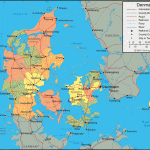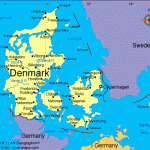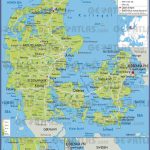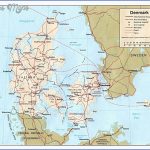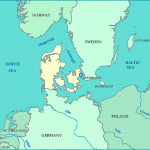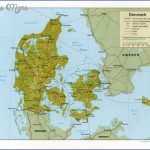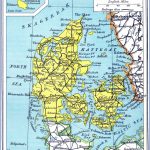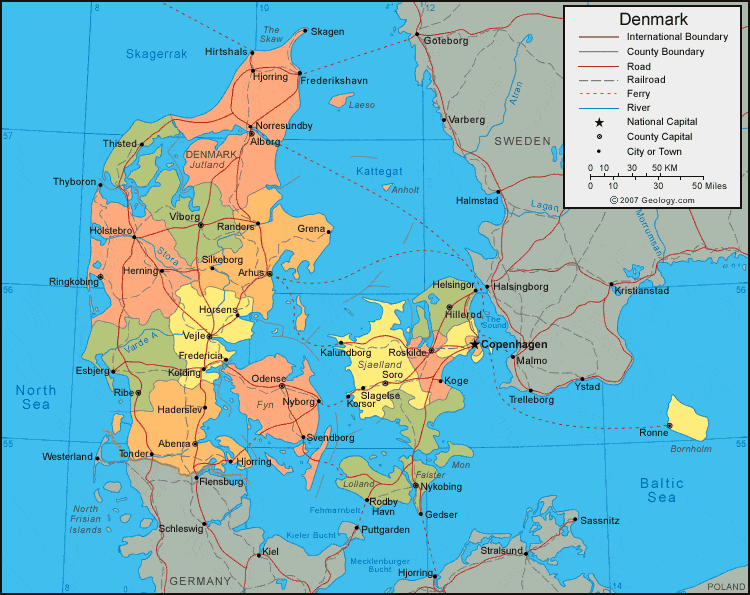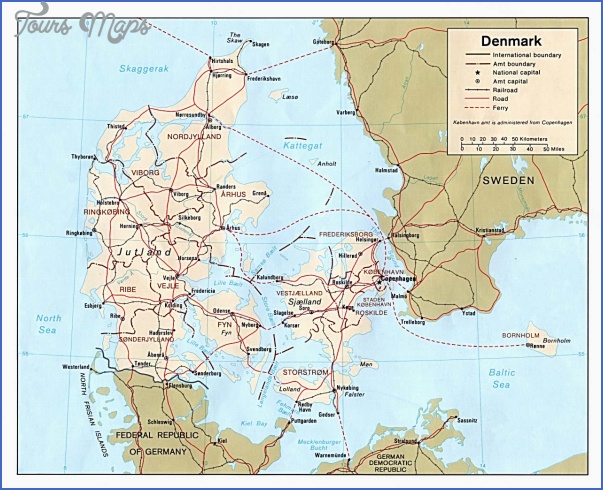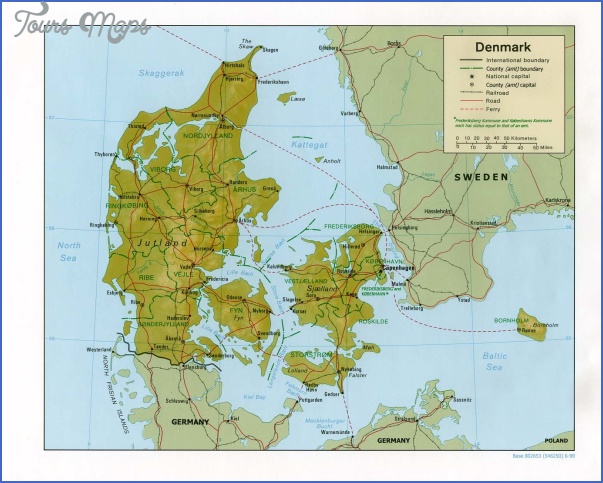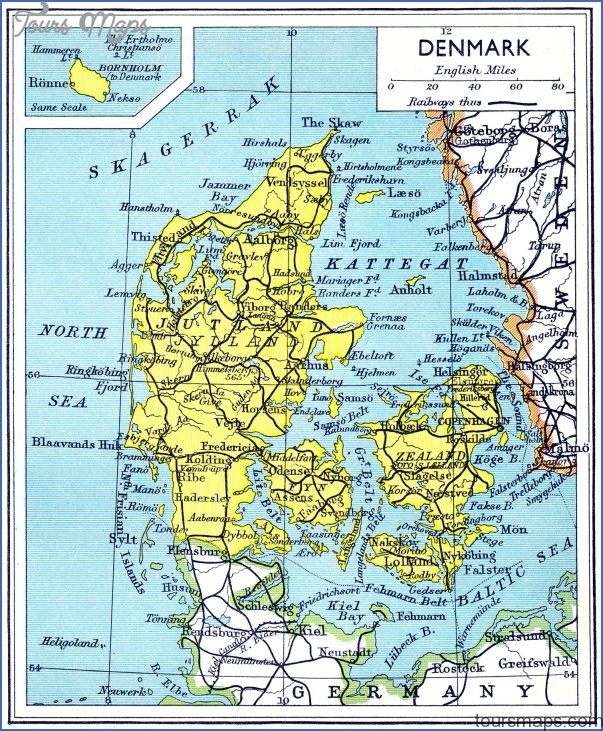Valdemar conquers the German-Swedish Baltic territories and in 1214 compels the Emperor Frederick 11 to give them up; but is forced to abandon them after a defeat at Bornhoved in Holstein. 1219: crusade against Estonia, which Valdemar conquers in 1238. In the battle of Reval (Tallinn) the Dannebrog, the Danish flag, is believed to have fallen mysteriously from heaven.
13th-16th c. Gothic architecture in brick.
13th c. (with later alterations): Roskilde Cathedral; Arhus Cathedral; St Knud’s Church, Odense. 14th c.: St Botolph’s Church (Budolfi Kirke), Alborg. 15th c.: St Nicholas’s Church, Koge.
1340-75 Valdemar IV Atterdag.
Valdemar restores the royal authority. In 1361 he plunders Visby (Gotland), which is allied with Liibeck, but in 1367-70 is defeated by the Hanseatic League and is compelled to recognise their privileges. The Union From 1375 to 1523 the three northern kingdoms are united under Danish rule. Denmark is an elective monarchy; the power of the nobility grows.
1375-1412 Margaret, daughter of Valdemar IV. Margaret becomes Regent in Denmark for her son Olaf (d. 1387) in 1375, in Norway after the death of her husband HSkon IV in 1380, in Sweden in 1389.
1397 The Union of Kalmar unites Denmark, Norway and Sweden. Eric of Pomerania, Margaret’s grand-nephew, is crowned king of the three kingdoms. Norway remains united with Denmark until 1814; Sweden wins its independence between 1433 and 1523.
1448-81 Christian of Oldenburg, founder of the dynasty which still reigns in Denmark.
1460 The Estates of Schleswig-Holstein elect Christian as their Duke. This personal union of the two duchies (whose indivisibility is confirmed by Christian) with Denmark holds the seed of the later conflicts of 1848-64.
1478 Foundation of the University of Copenhagen.
Denmark Map Photo Gallery
Maybe You Like Them Too
- The Best Cities To Visit in The World
- World’s 10 Best Places To Visit
- Coolest Countries in the World to Visit
- Travel to Santorini, Greece
- Map of Barbados – Holiday in Barbados

